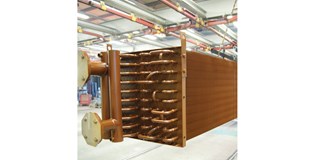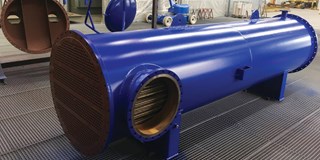^ A shell & tube heat exchanger.
Article By Daniël Eras, Commercial Manager, Heat-Cured Phenol Specialist, CP Phenolics, The Netherlands
The heat treatment in the polymerization oven forms homogeneous, hard, flexible, non-porous, and chemically very resistant protective layers. Moreover, they are not sensitive to strong temperature fluctuations because the coating layers are cross-linked with each other at a molecular level.
- Phenol-formaldehyde-based coatings;
- Epoxy-phenol-based coatings.
In this way it is possible to protect against media in the acidic as well as in the alkaline spectrum and for situations where protection at a higher ΔT is required.

It is further inadmissible for some applications that static charging can occur. For these cases it is possible to use an electrically conductive phenol-formaldehyde coating. In most cases, the phenol heat-cured coatings are electrically insulating, which is especially important in protecting against galvanic corrosion when using different base metals. In this way, baked phenol coatings can be used not only to protect coolers, but can also be used to protect semi-precious metals against corrosion, caused by sacrifice in the immediate area. The most widely used application, and therefore the most known, is that of the direct protection of heat exchangers against cooling water or other aggressive media. These can affect heat exchangers in such a way that their lifespan and their heat transfer and/or cooling capacity can be negatively affected. Reduction of the total cost of ownership through a heat-cured phenol coating treatment is the most important reason for a treatment. Moreover, a lot of money can be saved on maintenance and purchase costs when high-quality protection against corrosion is opted for.
Air coolers
- Finned air coolers
- Radiators
- Cooler coils
- Charge-air coolers
Less than 1% loss of cooling capacity

Because these products are efficient thermal conductors, applied in very thin films, HVAC-R and process equipment coil OEMs have indicated that no additional heating or cooling surface is required due to the presence of the modified baked phenolic coating. The cutting edge of slats are often the most vulnerable parts that are sensitive to corrosion. The heat-cured phenol coating of Here site is precisely designed to provide maximum protection for those parts against these extreme influences.



